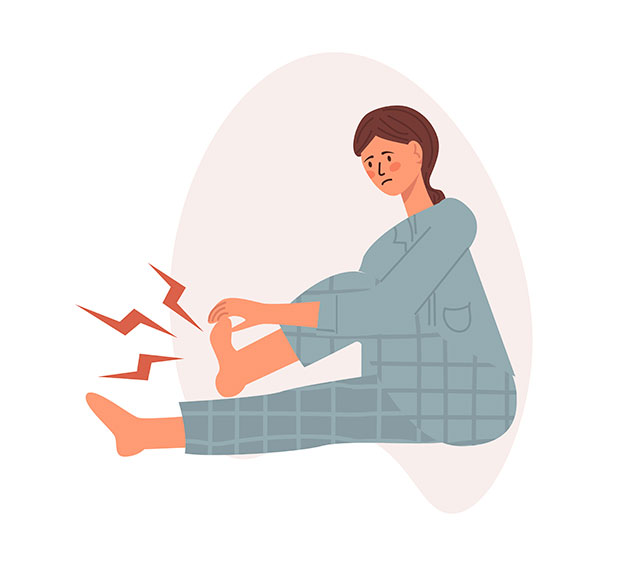
If you have psoriasis, you have about a 1-in-3 chance of developing psoriatic arthritis.
“Often, some of the first signs of this condition appear in your feet,” says James Varner, MMS, PA-C, board-certified physician assistant at Beaufort Memorial Lowcountry Medical Group Primary Care. “If you’re experiencing unexplained foot pain, swelling and tenderness, you could have psoriatic arthritis in your feet.”
Read More: 10 Warning Signs of Psoriatic Arthritis
How Psoriatic Arthritis Can Affect Feet
Each one of your feet has 26 bones and 33 joints, and all of those are connected by ligaments, muscles and tendons. Psoriatic arthritis can flare up at any one of those points.
Psoriatic arthritis can cause joint pain, stiffness, swelling, pain and tenderness in the ankles, feet and toes. The condition affects the feet in other ways, causing:
- Difficulty walking
- Heel pain
- Joints that feel hot
- Losing your range of motion or being unable to flex your toes and feet
- Pain on the bottom of your foot or in your arch
- Swelling in your toes such that they look like sausages
- Toenail changes, such as discoloration, pitting in your nails and nails separating from the nail bed
“We can help you manage psoriatic arthritis with medications and lifestyle changes,” Varner says. “As long as you stick with your treatment plan, symptoms shouldn’t limit activities.”
Read More: The Best Foods for Arthritis
Treating Psoriatic Arthritis
Some people with psoriatic arthritis can develop a rare condition called arthritis mutilans, which can cause the soft tissues in your bone to deteriorate, making it hard to bend or move your joints. Arthritis mutilans can also cause bones to fuse, complicating your ability to accomplish simple daily tasks, such as walking around your house.
“Fortunately, we can prevent arthritis mutilans in most patients,” Varner says. “Current treatments for psoriatic arthritis are quite effective.”
Treatment often involves a combination of lifestyle changes, medication and physical therapy. To start, avoid activities and shoes that exacerbate pain and use ice packs and shoe inserts to reduce inflammation. If pain affects your day-to-day life, your provider can give you corticosteroid injections.
Read More: Does Taking Turmeric for Arthritis Really Work?
Is My Foot Pain Psoriatic Arthritis?
If you know you have psoriasis, pay attention to changes in your feet or toes and talk to your provider about any symptoms that concern you. Many other orthopedic conditions have similar symptoms to psoriatic arthritis, including these other types of arthritis:
- Gout, which develops when excess uric acid forms crystals in body tissue
- Osteoarthritis, which often occurs with age or as a result of a previous injury
- Rheumatoid arthritis, a different type of chronic inflammatory arthritis
Other non-arthritis-related conditions can also cause foot pain, including plantar fasciitis — inflammation of tissue (the plantar fascia) on the bottom of your foot. Additionally, diabetes and chemotherapy can cause neuropathy, or nerve pain, in your feet. Overuse injuries and standing for a long time can cause problems, such as tendinitis and stress fractures.
Whether it’s psoriatic arthritis, osteoarthritis or something else entirely, Beaufort Memorial providers can help you get back on your feet.
Learn which treatment for psoriatic arthritis works best for you. Schedule an appointment with your primary care provider. Find a provider accepting new patients.
Updated: March 2025

